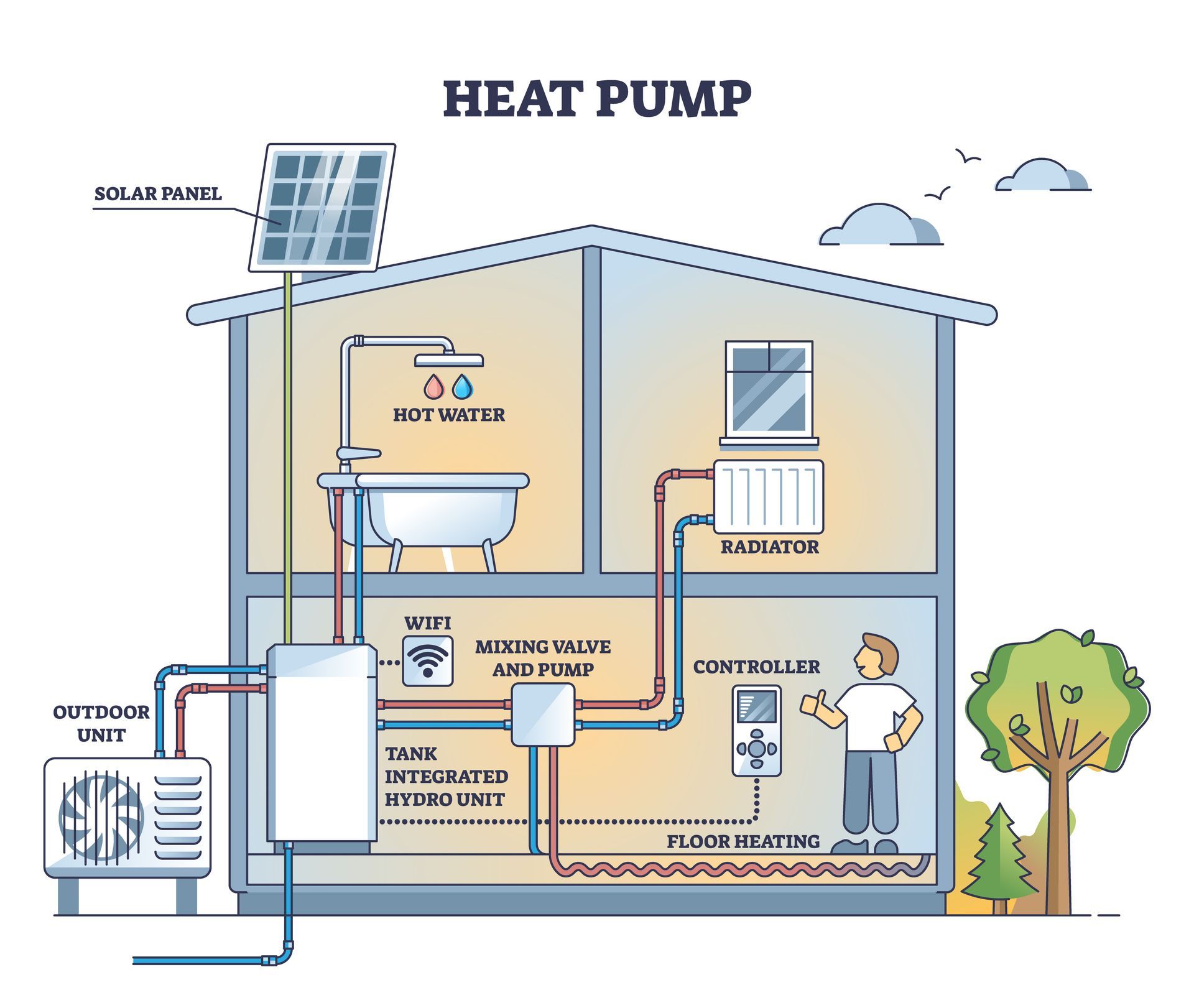Urb Monte Biarritz, Centro Comercial
Biarritz Local 9E/10B, 29688, Estepona, Málaga
+34 951-151-467
+34 744-716-950
Heat Pumps

Air Conditioning
Pool Heating
Floor Heating
Water Heating
How Heat Pump Works
01
Evaporation
Heat pumps take in heat from the air or ground or sometimes water, transferring it to a heat exchanger that contains a liquid refrigerant. This refrigerant absorbs heat from the outside and evaporates, turning it into a low-pressure, low-temperature gas.
02
Compression
The gas is transferred to an electrically powered compressor that compresses the refrigerant. This compression increases the pressure of the gas, which raises the gas temperature.
03
Condensation
The hot gas reaches the heat exchanger, where it’s circulated and transfers its heat to a cold water circuit. This causes the water to heat up as it absorbs heat from the gas. Once the water has reached the desired temperature, usually around 55 degrees, it’s sent to your home’s radiators and underfloor heating to warm your house.
By transferring heat to the water circuit, the refrigerant cools down enough to turn it back into a liquid.
04
Evaporation
The cooled refrigerant moves through an expansion valve, which lowers the pressure and allows it to absorb more heat energy. From there it’s pumped back into the heat exchanger to repeat the cycle.
“Amazing service and a great experience overall.”
Green,Quick & Reliable
All Rights Reserved | Green Sun System S.L.



